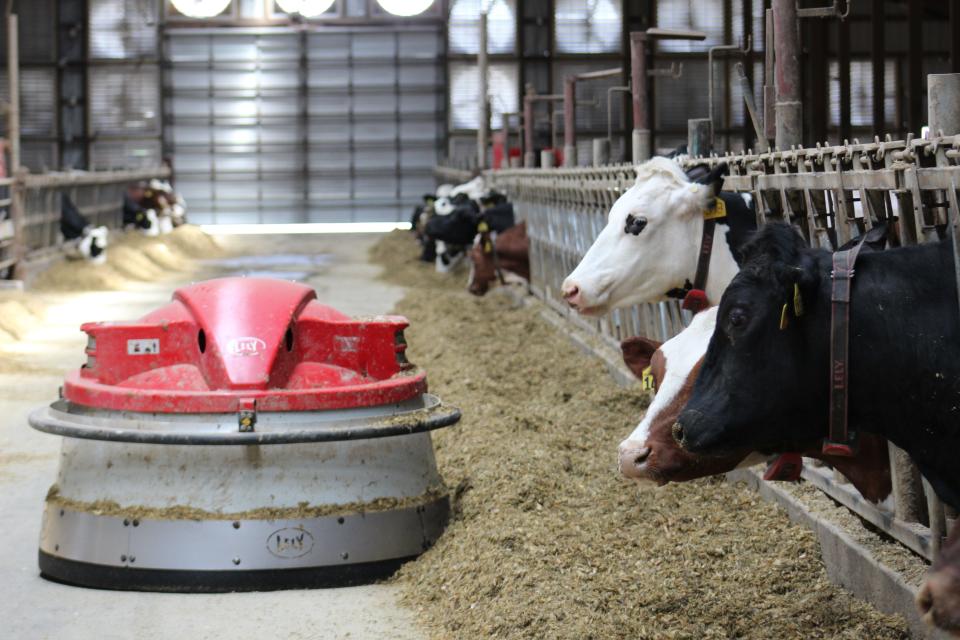WHO's top scientist sounds alarm about bird flu and need for vaccine development
World Health Organization’s top scientist said this week the recent bird flu outbreak is of “great concern” to public health, and vaccine development to halt the virus is “not where we need to be.”
The virus, known as Type A H5N1, which typically circulates among poultry and wild birds, has spread to mammals, including cows, cats and at least two people in the U.S. in recent years. The new development experts are eyeing is that the virus is now passing from mammal to mammal.
Bird flu has a high mortality rate in the hundreds of people who've contracted it, Dr. Jeremy Farrar, chief scientist at WHO, the United Nations health agency, told reporters on Thursday.
Dairy cows, worker: Bird flu outbreak is an 'evolving situation.' Here's what to know about symptoms, spread.
U.S. health officials say the country is ready to ramp up vaccine production if the risk of bird flu rises. The Centers for Disease Control and Prevention says the current risk to public health remains low.
"It's too early to press the panic button," Lawrence Gostin, a professor of public health law at Georgetown University and a leading expert in global health, told USA TODAY.
The nightmare scenario, he explained, is if the virus makes a genetic leap and begins human-to-human transmission. This would be worse than the COVID-19 pandemic given how infectious and deadly the virus is, he said.
While no human-to-human transmission has occurred, Farrar, of WHO, expressed concern about recent U.S. cases showing bird flu cases among cattle in several states and a Texas dairy worker. The infection has started to become a pandemic among animal species, he said at a news conference.
“The great concern, of course, is that in doing so – and infecting ducks and chickens, but now increasingly mammals – that that virus now evolves and develops the ability to infect humans,” he said. “And then critically, the ability to go from human-to-human transmission.”
Farrar also flagged his concern that vaccine development is not “where we need to be” and public health officials don’t currently have the capability to diagnose H5N1.
In a statement to USA TODAY, the U.S. Department of Health and Human Services' Administration for Strategic Preparedness and Response said its National Pre-Pandemic Influenza Vaccine Stockpile (NPIVS) program is equipped to respond rapidly to influenza strains as they evolve.
“NPIVS works closely with industry partners to make and test updated vaccines that match new strains of influenza viruses with pandemic potential as they emerge, while at the same time, supporting manufacturing capacity to allow for large-scale vaccine production if needed,” the statement said.
There are two antigens that are “well-matched” to the circulating strain of H5N1, the federal agency said. The agency said hundreds of thousands of doses of vaccine could be deployed within weeks, pending regulatory action by the Food and Drug Administration. Within months, federal officials could deploy more than 100 million doses.
But Gostin, of Georgetown, said he doubts that's realistic. While the U.S. is comparatively better, the world lacks the capacity to ramp up hundreds of millions or billions of vaccines for a pandemic with bird flu. And even if the vaccine initially matches virus strains, the virus mutates quickly. He also noted that public health systems lack the ability for early detection and testing of bird flu.
"For many, many decades, these avian and swine influenzas have stayed within the animal kingdom," Gostin said. "The hope and the expectation is that it will continue to do that. But one day, that virus will mutate and go to a human, and then spread to a global pandemic very, very quickly. And we have to be ready for that day."

Bird flu in dairy cows in eight states, recent human case
Eight states experienced recent bird flu outbreaks in dairy cows beginning in late March in Texas. The U.S. Department of Agriculture believes migratory birds were the source of the infection in cows. The virus then spread from herd to herd, experts believe, suggesting there has been transmission among mammals. Genomic sequencing of the viruses taken from infected cattle indicates this virus is not more transmissible to humans, the USDA said.
On April 1, Texas health officials said a dairy worker was infected with bird flu after close contact with sick cows. The worker – the second person in the U.S. to get bird flu since 2022 – had symptoms of conjunctivitis or eye redness.
Bird flu spreads primarily through contact with infected birds, including sick or dead animals. Human cases are rare. Most occur in people who've had unprotected exposure to sick animals. The risk is heightened for people who work with infected poultry or livestock, and for veterinarians who treat infected animals.
On Thursday, the WHO said it also updated its terms on airborne diseases for the next expected pandemic. Consulting with health agencies in the U.S., Africa, China and Europe, health officials are opting for “infectious respiratory particles” instead of “aerosols” or “droplets” to avoid confusion about particle sizes, the U.N. said. This can better coordinate responses to respiratory pathogens, Farrar, of WHO, said.
Karen Weintraub contributed to this report.
This article originally appeared on USA TODAY: Bird flu, lack of vaccine prompt 'great concern' for top WHO official
